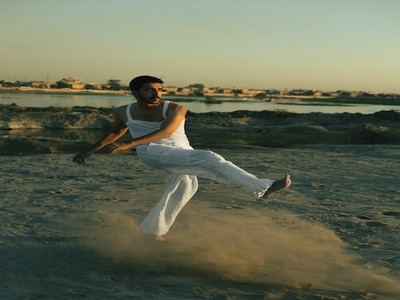乐鱼下载app官网
- 2024/07/05 来源:乐鱼下载app官网
2019年(nian)即(ji)将(jiang)结(jie)束(shu),这(zhe)一(yi)年(nian)里(li)有(you)许(xu)多(duo)大(da)事(shi)小(xiao)情(qing)值(zhi)得(de)回(hui)忆(yi),也(ye)有(you)不(bu)少(shao)名(ming)人(ren)相(xiang)继(ji)辞(ci)世(shi)。他(ta)们(men)当(dang)中(zhong)有(you)政(zheng)要(yao)、科(ke)学(xue)家(jia)、文(wen)学(xue)巨(ju)匠(jiang)、建(jian)筑(zhu)大(da)师(shi)、时(shi)尚(shang)泰(tai)斗(dou)……他(ta)们(men)的(de)离(li)去(qu)令(ling)世(shi)人(ren)不(bu)禁(jin)扼(e)腕(wan)叹(tan)息(xi)。本(ben)期(qi)我(wo)们(men)就(jiu)一(yi)起(qi)回(hui)顾(gu)下(xia)2019年(nian)故(gu)去(qu)的(de)十(shi)位(wei)中(zhong)外(wai)名(ming)人(ren)吧(ba)。 “糖(tang)丸(wan)爷(ye)爷(ye)”顾(gu)方(fang)舟(zhou) Gu Fangzhou, a virologist who dedicated his life to eradicating polio from China, passed away at age 92 on Jan 2. "Sugar pills", an oral polio vaccine, developed by Gu reduced incidence rate of the disease by nearly 100 times from 1949 to 1993, saving millions of children from crippling paralysis. "I spent my whole life doing one thing – developing an effective polio vaccine," Gu Fangzhou, once said while summarizing his life. Gu started polio research in 1957 and created the sugar pills attenuated oral vaccine in 1959. According to Gu's biography, in order to test the efficacy and side effects of the vaccine, he administered the vaccine to himself and started the first stage of the human trial. After extensive testing, he took another bold step to administer the oral vaccine to his one-month-old son. This inspired his colleagues to vaccinate their kids. "If we don't believe in what we produce, how can others believe in it?" said Gu while recalling the trial.病(bing)毒(du)学(xue)家(jia)顾(gu)方(fang)舟(zhou)1月(yue)2日(ri)逝(shi)世(shi),终(zhong)年(nian)92岁(sui)。顾(gu)方(fang)舟(zhou)毕(bi)生(sheng)致(zhi)力(li)于(yu)根(gen)除(chu)国(guo)内(nei)的(de)脊(ji)髓(sui)灰(hui)质(zhi)炎(yan) (小(xiao)儿(e)麻(ma)痹(bi)症(zheng))。1949年(nian)至(zhi)1993年(nian),顾(gu)方(fang)舟(zhou)研(yan)制(zhi)的(de)“糖(tang)丸(wan)”口(kou)服(fu)脊(ji)灰(hui)活(huo)疫(yi)苗(miao)将(jiang)脊(ji)灰(hui)发(fa)病(bing)率(lu)降(jiang)低(di)近(jin)100倍(bei),使(shi)上(shang)百(bai)万(wan)儿(e)童(tong)免(mian)于(yu)瘫(tan)痪(huan)。在(zai)概(gai)括(kuo)自(zi)己(ji)的(de)一(yi)生(sheng)时(shi)顾(gu)方(fang)舟(zhou)曾(zeng)说(shuo):“我(wo)一(yi)辈(bei)子(zi)只(zhi)做(zuo)一(yi)件(jian)事(shi)——研(yan)制(zhi)出(chu)了(le)一(yi)种(zhong)有(you)效(xiao)的(de)脊(ji)灰(hui)疫(yi)苗(miao)”。1957年(nian),顾(gu)方(fang)舟(zhou)开(kai)始(shi)进(jin)行(xing)脊(ji)灰(hui)研(yan)究(jiu),1959年(nian)制(zhi)造(zao)出(chu)口(kou)服(fu)脊(ji)灰(hui)减(jian)毒(du)活(huo)疫(yi)苗(miao)。根(gen)据(ju)顾(gu)方(fang)舟(zhou)的(de)传(chuan)记(ji),为(wei)测(ce)试(shi)疫(yi)苗(miao)的(de)功(gong)效(xiao)和(he)副(fu)作(zuo)用(yong),他(ta)给(ji)自(zi)己(ji)服(fu)下(xia)脊(ji)灰(hui)疫(yi)苗(miao)并(bing)开(kai)启(qi)第(di)一(yi)阶(jie)段(duan)的(de)人(ren)体(ti)试(shi)验(yan)。在(zai)进(jin)行(xing)大(da)量(liang)试(shi)验(yan)后(hou),他(ta)又(you)采(cai)取(qu)另(ling)一(yi)项(xiang)大(da)胆(dan)的(de)行(xing)动(dong),给(ji)自(zi)己(ji)一(yi)个(ge)月(yue)大(da)的(de)儿(e)子(zi)服(fu)下(xia)脊(ji)灰(hui)活(huo)疫(yi)苗(miao)。在(zai)他(ta)的(de)感(gan)召(zhao)下(xia),顾(gu)方(fang)舟(zhou)的(de)同(tong)事(shi)们(men)也(ye)纷(fen)纷(fen)给(ji)自(zi)己(ji)的(de)孩(hai)子(zi)服(fu)用(yong)了(le)疫(yi)苗(miao)。在(zai)回(hui)忆(yi)该(gai)试(shi)验(yan)时(shi)顾(gu)方(fang)舟(zhou)说(shuo):“如(ru)果(guo)我(wo)们(men)自(zi)己(ji)都(du)不(bu)相(xiang)信(xin)自(zi)己(ji)研(yan)制(zhi)的(de)疫(yi)苗(miao),怎(zen)么(me)能(neng)让(rang)别(bie)人(ren)信(xin)呢(ne)?” “中(zhong)国(guo)氢(qing)弹(dan)之(zhi)父(fu)”于(yu)敏(min)
Yu Min, a nuclear physicist widely known as the father of China's hydrogen bomb, died on Jan 16 at the age of 93. Yu, together with 99 other Chinese people from different walks of life, won the honorary title of "reform pioneer" at a gathering held in Beijing on Dec 18 to celebrate the 40th anniversary of reform and opening-up. In January 2015 Yu also won China's top science and technology accolade. Yu, a native of Tianjin, earned his bachelor's degree in physics from Peking University in 1949 and then conducted postgraduate research at the school's physics department. He also served as a teaching assistant. He entered the Modern Physics Institute of the Chinese Academy of Sciences and began to study atomic nuclear physics theory in 1951. To address the country's strategic needs, Yu began to conduct theoretical research on nuclear weapons in 1961. For the next 28 years, Yu and his work remained top national secrets.1月(yue)16日(ri),以(yi)"中(zhong)国(guo)氢(qing)弹(dan)之(zhi)父(fu)"而(e)广(guang)为(wei)人(ren)知(zhi)的(de)核(he)物(wu)理(li)学(xue)家(jia)于(yu)敏(min)去(qu)世(shi),享(xiang)年(nian)93岁(sui)。去(qu)年(nian)12月(yue)18日(ri)在(zai)北(bei)京(jing)召(zhao)开(kai)的(de)庆(qing)祝(zhu)改(gai)革(ge)开(kai)放(fang)40周(zhou)年(nian)大(da)会(hui)上(shang),于(yu)敏(min)和(he)另(ling)外(wai)99位(wei)来(lai)自(zi)各(ge)行(xing)各(ge)业(ye)的(de)同(tong)志(zhi)被(bei)授(shou)予(yu)“改(gai)革(ge)先(xian)锋(feng)”的(de)称(chen)号(hao)。2015年(nian)1月(yue),于(yu)敏(min)获(huo)得(de)中(zhong)国(guo)最(zui)高(gao)科(ke)学(xue)技(ji)术(shu)奖(jiang)。于(yu)敏(min)生(sheng)于(yu)天(tian)津(jin),1949年(nian)在(zai)北(bei)京(jing)大(da)学(xue)获(huo)得(de)物(wu)理(li)学(xue)学(xue)士(shi)学(xue)位(wei),之(zhi)后(hou)在(zai)该(gai)校(xiao)物(wu)理(li)系(xi)进(jin)行(xing)研(yan)究(jiu)生(sheng)科(ke)研(yan)工(gong)作(zuo),还(hai)曾(zeng)担(dan)任(ren)过(guo)助(zhu)教(jiao)。1951年(nian),他(ta)进(jin)入(ru)中(zhong)国(guo)科(ke)学(xue)院(yuan)现(xian)代(dai)物(wu)理(li)研(yan)究(jiu)所(suo),开(kai)始(shi)研(yan)究(jiu)原(yuan)子(zi)核(he)物(wu)理(li)理(li)论(lun)。为(wei)满(man)足(zu)国(guo)家(jia)战(zhan)略(lue)需(xu)求(qiu),1961年(nian),于(yu)敏(min)开(kai)始(shi)从(cong)事(shi)核(he)武(wu)器(qi)理(li)论(lun)研(yan)究(jiu)工(gong)作(zuo)。此(ci)后(hou)28年(nian),于(yu)敏(min)和(he)他(ta)从(cong)事(shi)的(de)事(shi)业(ye)都(du)属(shu)于(yu)国(guo)家(jia)最(zui)高(gao)机(ji)密(mi)。 中(zhong)国(guo)当(dang)代(dai)散(san)文(wen)八(ba)大(da)家(jia)之(zhi)一(yi) 林(lin)清(qing)玄(xuan)
Chinese author Lin Qingxuan died at the age of 65 on Jan 23. Lin, who once used pen names such as Qin Qing and Lin Li, was a celebrated writer, essayist, poet, and scholar, who won numerous prizes and enjoyed great popularity across the Straits. Lin showed his intellect and talent for writing at a very young age. He started his career by publishing articles in local newspapers and won first prize in the Tainan writing competition during his high school days. Lin spent his college years at Shih Hsin University, during which he published his first book, "Lian Hua Kai Luo." Hailed as one of the eight masters of contemporary prose in China, the essay master has published more than a hundred books during his career.1月(yue)23日(ri),我(wo)国(guo)作(zuo)家(jia)林(lin)清(qing)玄(xuan)逝(shi)世(shi),享(xiang)年(nian)65岁(sui)。林(lin)清(qing)玄(xuan)是(shi)著(zhu)名(ming)的(de)作(zuo)家(jia)、散(san)文(wen)家(jia)、诗(shi)人(ren)和(he)学(xue)者(zhe),曾(zeng)获(huo)奖(jiang)无(wu)数(shu),在(zai)海(hai)峡(xia)两(liang)岸(an)均(jun)享(xiang)有(you)很(hen)高(gao)的(de)知(zhi)名(ming)度(du),曾(zeng)用(yong)笔(bi)名(ming)有(you)秦(qin)情(qing)、林(lin)漓(li)等(deng)。林(lin)清(qing)玄(xuan)很(hen)小(xiao)的(de)时(shi)候(hou)就(jiu)展(zhan)现(xian)出(chu)写(xie)作(zuo)方(fang)面(mian)的(de)天(tian)赋(fu)才(cai)华(hua)。上(shang)高(gao)中(zhong)时(shi),林(lin)清(qing)玄(xuan)便(bian)在(zai)当(dang)地(di)媒(mei)体(ti)上(shang)发(fa)表(biao)文(wen)章(zhang),还(hai)在(zai)台(tai)湾(wan)写(xie)作(zuo)比(bi)赛(sai)中(zhong)获(huo)得(de)一(yi)等(deng)奖(jiang),由(you)此(ci)开(kai)启(qi)他(ta)的(de)职(zhi)业(ye)生(sheng)涯(ya)。在(zai)世(shi)新(xin)大(da)学(xue)读(du)书(shu)时(shi),他(ta)出(chu)版(ban)了(le)自(zi)己(ji)的(de)第(di)一(yi)本(ben)书(shu)《莲(lian)花(hua)开(kai)落(luo)》。林(lin)清(qing)玄(xuan)被(bei)誉(yu)为(wei)国(guo)内(nei)当(dang)代(dai)散(san)文(wen)八(ba)大(da)作(zuo)家(jia)之(zhi)一(yi),他(ta)在(zai)自(zi)己(ji)的(de)职(zhi)业(ye)生(sheng)涯(ya)中(zhong)出(chu)版(ban)书(shu)籍(ji)逾(yu)百(bai)部(bu)。 时(shi)尚(shang)教(jiao)父(fu)“老(lao)佛(fu)爷(ye)”卡(ka)尔(e)·拉(la)格(ge)斐(fei)
Karl Lagerfeld, the most prolific designer of the 20th and 21st centuries and a man whose career formed the prototype of the modern luxury fashion industry, died on Feb 19. He was 85. Creative director of Chanel since 1983 and Fendi since 1965, and founder of his own line, Lagerfeld was the definition of a fashion polyglot, able to speak the language of many different brands at the same time. In his 80s, when most of his peers were retiring to their yachts or country estates, he was designing an average of 14 new collections a year ranging from couture to the high street, and not counting collaborations and special projects. Lagerfeld never stopped creating. He was also a photographer, whose work was exhibited at the Pinacothèque de Paris; a publisher, having founded his own imprint for Steidl, Edition 7L. A self-identified "caricature," with his dark glasses, powdered ponytail, black jeans, fingerless gloves, starched collars, Chrome Hearts jewelry and obsessive Diet Coke consumption, he achieved such a level of global fame and controversy.2月(yue)19日(ri),20世(shi)纪(ji)和(he)21世(shi)纪(ji)创(chuang)作(zuo)成(cheng)就(jiu)最(zui)为(wei)卓(zhuo)著(zhu)、在(zai)职(zhi)业(ye)生(sheng)涯(ya)中(zhong)塑(su)造(zao)了(le)现(xian)代(dai)奢(she)侈(chi)时(shi)尚(shang)产(chan)业(ye)原(yuan)型(xing)的(de)设(she)计(ji)师(shi)卡(ka)尔(e)·拉(la)格(ge)斐(fei)辞(ci)世(shi),享(xiang)年(nian)85岁(sui)。拉(la)格(ge)斐(fei)从(cong)1983年(nian)起(qi)担(dan)任(ren)香(xiang)奈(nai)儿(e)的(de)创(chuang)意(yi)总(zong)监(jian),从(cong)1965年(nian)起(qi)担(dan)任(ren)芬(fen)迪(di)的(de)创(chuang)意(yi)总(zong)监(jian),还(hai)创(chuang)立(li)了(le)自(zi)己(ji)的(de)品(pin)牌(pai),他(ta)一(yi)直(zhi)是(shi)时(shi)尚(shang)多(duo)语(yu)者(zhe)的(de)代(dai)名(ming)词(ci),可(ke)以(yi)同(tong)时(shi)用(yong)好(hao)几(ji)个(ge)不(bu)同(tong)品(pin)牌(pai)的(de)语(yu)言(yan)表(biao)达(da)时(shi)尚(shang)。80岁(sui)时(shi),他(ta)的(de)同(tong)龄(ling)人(ren)大(da)都(du)已(yi)经(jing)退(tui)休(xiu),在(zai)游(you)艇(ting)上(shang)或(huo)乡(xiang)间(jian)别(bie)墅(shu)里(li)打(da)发(fa)时(shi)间(jian),他(ta)却(que)依(yi)旧(jiu)平(ping)均(jun)每(mei)年(nian)设(she)计(ji)高(gao)级(ji)定(ding)制(zhi)时(shi)装(zhuang)、高(gao)街(jie)产(chan)品(pin)等(deng)14个(ge)新(xin)系(xi)列(lie),这(zhe)还(hai)不(bu)算(suan)那(na)些(xie)合(he)作(zuo)和(he)特(te)别(bie)的(de)项(xiang)目(mu)。拉(la)格(ge)斐(fei)从(cong)未(wei)停(ting)止(zhi)创(chuang)作(zuo)。他(ta)同(tong)时(shi)还(hai)是(shi)摄(she)影(ying)师(shi),作(zuo)品(pin)曾(zeng)在(zai)巴(ba)黎(li)美(mei)术(shu)馆(guan)展(zhan)出(chu);他(ta)也(ye)是(shi)出(chu)版(ban)人(ren),在(zai)Steidl出(chu)版(ban)社(she)创(chuang)办(ban)了(le)Edition 7L品(pin)牌(pai)。墨(mo)镜(jing)、扑(pu)粉(fen)的(de)马(ma)尾(wei)辫(bian)、黑(hei)色(se)牛(niu)仔(zi)裤(ku)、露(lu)指(zhi)手(shou)套(tao)、硬(ying)挺(ting)的(de)衣(yi)领(ling)、克(ke)罗(luo)心(xin)珠(zhu)宝(bao)和(he)强(qiang)迫(po)症(zheng)般(ban)不(bu)停(ting)喝(he)着(zhe)健(jian)怡(yi)可(ke)乐(le),这(zhe)就(jiu)是(shi)他(ta)自(zi)己(ji)也(ye)认(ren)同(tong)的(de)“漫(man)画(hua)形(xing)象(xiang)”,他(ta)享(xiang)有(you)极(ji)高(gao)的(de)国(guo)际(ji)声(sheng)誉(yu),同(tong)时(shi)也(ye)备(bei)受(shou)争(zheng)议(yi)。 篮(lan)坛(tan)巨(ju)星(xing) 约(yue)翰(han)·哈(ha)夫(fu)利(li)切(qie)克(ke)
John Havlicek, the eight-time NBA champion and Basketball Hall of Famer, died on April 25. He was 79. Havlicek's death was confirmed in a statement by the Boston Celtics, the team he played with for 16 seasons. The Boston Celtics great whose steal of Hal Greer's inbounds pass in the final seconds of the 1965 Eastern Conference final against the Philadelphia 76ers remains one of the most famous plays in NBA history. Havlicek remains the Celtics' highest scoring member with 26,395 points across his career. He was also a 13-time NBA All-Star, and upon his retirement in 1978, the Celtics immediately retired his number 17 jersey with him. While the NBA legend had been suffering from Parkinson's disease, the statement did not confirm his exact cause of death.4月(yue)25日(ri),8次(ci)NBA总(zong)冠(guan)军(jun)得(de)主(zhu)、篮(lan)球(qiu)名(ming)人(ren)堂(tang)成(cheng)员(yuan)约(yue)翰(han)·哈(ha)夫(fu)利(li)切(qie)克(ke)去(qu)世(shi),享(xiang)年(nian)79岁(sui)。哈(ha)夫(fu)利(li)切(qie)克(ke)曾(zeng)效(xiao)力(li)16个(ge)赛(sai)季(ji)的(de)波(bo)士(shi)顿(du)凯(kai)尔(e)特(te)人(ren)队(dui)在(zai)一(yi)份(fen)声(sheng)明(ming)中(zhong)证(zheng)实(shi)了(le)哈(ha)夫(fu)利(li)切(qie)克(ke)的(de)死(si)讯(xun)。1965年(nian)在(zai)该(gai)队(dui)与(yu)费(fei)城(cheng)76人(ren)队(dui)进(jin)行(xing)东(dong)部(bu)决(jue)赛(sai)结(jie)束(shu)前(qian)的(de)最(zui)后(hou)几(ji)秒(miao)钟(zhong)里(li),这(zhe)位(wei)波(bo)士(shi)顿(du)凯(kai)尔(e)特(te)人(ren)队(dui)巨(ju)星(xing)截(jie)断(duan)了(le)哈(ha)尔(e)·格(ge)瑞(rui)尔(e)的(de)界(jie)内(nei)传(chuan)球(qiu),至(zhi)今(jin)这(zhe)一(yi)球(qiu)仍(reng)是(shi)NBA史(shi)上(shang)最(zui)著(zhu)名(ming)的(de)截(jie)球(qiu)之(zhi)一(yi)。哈(ha)夫(fu)利(li)切(qie)克(ke)也(ye)是(shi)凯(kai)尔(e)特(te)人(ren)队(dui)得(de)分(fen)最(zui)多(duo)的(de)球(qiu)员(yuan),他(ta)在(zai)整(zheng)个(ge)职(zhi)业(ye)生(sheng)涯(ya)中(zhong)总(zong)共(gong)得(de)分(fen)26395分(fen)。他(ta)曾(zeng)13次(ci)入(ru)选(xuan)NBA全(quan)明(ming)星(xing)阵(zhen)容(rong)。1978年(nian)退(tui)役(yi)时(shi),他(ta)的(de)17号(hao)球(qiu)衣(yi)也(ye)与(yu)之(zhi)一(yi)起(qi)退(tui)役(yi)。虽(sui)然(ran)这(zhe)位(wei)NBA传(chuan)奇(qi)球(qiu)员(yuan)一(yi)直(zhi)患(huan)有(you)帕(pa)金(jin)森(sen)氏(shi)症(zheng),但(dan)声(sheng)明(ming)中(zhong)并(bing)未(wei)证(zheng)实(shi)其(qi)确(que)切(qie)死(si)因(yin)。 建(jian)筑(zhu)大(da)师(shi) 贝(bei)聿(yu)铭(ming)
I.M. Pei, the world-famous Chinese-American architect, died in a New York hospital on May 16 at the age of 102. In April of this year, Pei just celebrated his 102nd birthday. Pei was born in Guangzhou, Guangdong province, on April 26, 1917. In 1935, he went to the US to study at the University of Pennsylvania, the Massachusetts Institute of Technology, and Harvard University. He obtained a bachelor's degree in architecture from the Massachusetts Institute of Technology and a master's degree in architecture from Harvard University. In 1983, he won the Pritzker prize, known as the Nobel Prize for architects. The glass pyramid of the Louvre in Paris, France is the most famous masterpiece of I.M. Pei. His architectural works in China include the Suzhou Museum, Beijing Xiangshan Hotel, Hong Kong Bank of China Tower and Beijing Bank of China Head Office. The Chinese embassy in the US also came from the hand of Pei.享(xiang)誉(yu)全(quan)球(qiu)的(de)美(mei)籍(ji)华(hua)裔(yi)建(jian)筑(zhu)大(da)师(shi)贝(bei)聿(yu)铭(ming)5月(yue)16日(ri)在(zai)纽(niu)约(yue)一(yi)家(jia)医(yi)院(yuan)与(yu)世(shi)长(chang)辞(ci),享(xiang)年(nian)102岁(sui)。今(jin)年(nian)4月(yue),贝(bei)聿(yu)铭(ming)才(cai)刚(gang)过(guo)完(wan)102岁(sui)生(sheng)日(ri)。贝(bei)聿(yu)铭(ming)1917年(nian)4月(yue)26日(ri)生(sheng)于(yu)广(guang)东(dong)省(sheng)广(guang)州(zhou)市(shi)。贝(bei)聿(yu)铭(ming)1935年(nian)赴(fu)美(mei)求(qiu)学(xue),先(xian)后(hou)就(jiu)读(du)于(yu)宾(bin)夕(xi)法(fa)尼(ni)亚(ya)大(da)学(xue)、麻(ma)省(sheng)理(li)工(gong)学(xue)院(yuan)和(he)哈(ha)佛(fu)大(da)学(xue),取(qu)得(de)了(le)麻(ma)省(sheng)理(li)工(gong)学(xue)院(yuan)建(jian)筑(zhu)学(xue)士(shi)学(xue)位(wei)和(he)哈(ha)佛(fu)大(da)学(xue)建(jian)筑(zhu)硕(shuo)士(shi)学(xue)位(wei)。1983年(nian)贝(bei)聿(yu)铭(ming)获(huo)得(de)普(pu)利(li)兹(zi)克(ke)建(jian)筑(zhu)奖(jiang),该(gai)奖(jiang)被(bei)誉(yu)为(wei)“建(jian)筑(zhu)界(jie)的(de)诺(nuo)贝(bei)尔(e)奖(jiang)”。法(fa)国(guo)巴(ba)黎(li)卢(lu)浮(fu)宫(gong)的(de)玻(bo)璃(li)金(jin)字(zi)塔(ta)是(shi)贝(bei)聿(yu)铭(ming)最(zui)著(zhu)名(ming)的(de)代(dai)表(biao)作(zuo)。他(ta)在(zai)国(guo)内(nei)的(de)建(jian)筑(zhu)作(zuo)品(pin)包(bao)括(kuo)苏(su)州(zhou)博(bo)物(wu)馆(guan)、北(bei)京(jing)香(xiang)山(shan)饭(fan)店(dian)、香(xiang)港(gang)中(zhong)银(yin)大(da)厦(xia)、北(bei)京(jing)中(zhong)国(guo)银(yin)行(xing)总(zong)行(xing)等(deng)。中(zhong)国(guo)驻(zhu)美(mei)国(guo)大(da)使(shi)馆(guan)也(ye)出(chu)自(zi)贝(bei)聿(yu)铭(ming)之(zhi)手(shou)。 坚(jian)守(shou)正(zheng)义(yi)的(de)大(da)法(fa)官(guan) 约(yue)翰(han)·保(bao)罗(luo)·史(shi)蒂(di)文(wen)斯(si)
John Paul Stevens, US Supreme Court Justice from 1975 to 2010, died on July 16 at the age of 99. "Stevens died this evening at Holy Cross Hospital in Fort Lauderdale, Florida, of complications following a stroke he suffered on July 15," the court said in a statement. Chief Justice John Roberts said Stevens "brought to our bench an inimitable blend of kindness, humility, wisdom, and independence. His unrelenting commitment to justice has left us a better nation". Stevens was born in Chicago in 1920, and served in the US Navy from 1941 to 1945. He served as a judge of the US court of appeals for the seventh circuit from 1970 to 1975. Stevens was credited as a prominent liberal voice in the Supreme Court, as he acted to limit the death penalty, establish gay rights, promote racial equality and protect legal abortion.美(mei)国(guo)最(zui)高(gao)法(fa)院(yuan)前(qian)任(ren)大(da)法(fa)官(guan)约(yue)翰(han)·保(bao)罗(luo)·史(shi)蒂(di)文(wen)斯(si)于(yu)7月(yue)16日(ri)去(qu)世(shi),享(xiang)年(nian)99岁(sui)。史(shi)蒂(di)文(wen)斯(si)曾(zeng)于(yu)1975年(nian)至(zhi)2010年(nian)期(qi)间(jian)任(ren)此(ci)职(zhi)务(wu)。最(zui)高(gao)法(fa)院(yuan)在(zai)声(sheng)明(ming)中(zhong)表(biao)示(shi):“史(shi)蒂(di)文(wen)斯(si)16日(ri)晚(wan)在(zai)佛(fu)罗(luo)里(li)达(da)州(zhou)劳(lao)德(de)代(dai)尔(e)堡(bao)的(de)圣(sheng)十(shi)字(zi)医(yi)院(yuan)去(qu)世(shi),死(si)因(yin)是(shi)他(ta)在(zai)7月(yue)15日(ri)中(zhong)风(feng)后(hou)出(chu)现(xian)的(de)并(bing)发(fa)症(zheng)。”首(shou)席(xi)大(da)法(fa)官(guan)约(yue)翰(han)·罗(luo)伯(bo)茨(ci)说(shuo):“史(shi)蒂(di)文(wen)斯(si)把(ba)无(wu)与(yu)伦(lun)比(bi)的(de)仁(ren)爱(ai)、谦(qian)逊(xun)、智(zhi)慧(hui)和(he)独(du)立(li)的(de)品(pin)质(zhi)带(dai)到(dao)了(le)最(zui)高(gao)法(fa)院(yuan)。他(ta)对(dui)正(zheng)义(yi)的(de)坚(jian)守(shou)使(shi)我(wo)们(men)的(de)国(guo)家(jia)更(geng)加(jia)美(mei)好(hao)。”斯(si)蒂(di)文(wen)斯(si)1920年(nian)生(sheng)于(yu)芝(zhi)加(jia)哥(ge),1941年(nian)至(zhi)1945年(nian)期(qi)间(jian),曾(zeng)在(zai)美(mei)国(guo)海(hai)军(jun)服(fu)役(yi);1970年(nian)至(zhi)1975年(nian),担(dan)任(ren)美(mei)国(guo)第(di)七(qi)巡(xun)回(hui)上(shang)诉(su)法(fa)院(yuan)法(fa)官(guan)。史(shi)蒂(di)文(wen)斯(si)被(bei)誉(yu)为(wei)最(zui)高(gao)法(fa)院(yuan)杰(jie)出(chu)的(de)自(zi)由(you)派(pa)人(ren)士(shi),他(ta)采(cai)取(qu)行(xing)动(dong)限(xian)制(zhi)死(si)刑(xing)、确(que)立(li)同(tong)性(xing)恋(lian)权(quan)利(li)、促(cu)进(jin)种(zhong)族(zu)平(ping)等(deng)、维(wei)护(hu)合(he)法(fa)堕(duo)胎(tai)。 首(shou)位(wei)女(nu)性(xing)黑(hei)人(ren)诺(nuo)贝(bei)尔(e)文(wen)学(xue)奖(jiang)得(de)主(zhu) 托(tuo)妮(ni)·莫(mo)里(li)森(sen)
US author Toni Morrison, whose 1987 novel "Beloved" about a runaway slave won a Pulitzer Prize and contributed to a body of work that made her the first black woman to be presented the Nobel Prize in Literature, died at the age of 88. A spokesman for her publishing company announced the death but did not provide an immediate cause. The Washington Post said she died on August 8 at a New York hospital. Morrison was a commercial as well as critical success, drawing praise for writing in a vivid, lyrical style while assessing issues of race, gender and love in American society. "Beloved" was set during the US Civil War and based on the true story of a woman who killed her 2-year-old daughter to spare her from slavery. 美(mei)国(guo)作(zuo)家(jia)托(tuo)妮(ni)·莫(mo)里(li)森(sen)去(qu)世(shi),享(xiang)年(nian)88岁(sui)。莫(mo)里(li)森(sen)的(de)出(chu)版(ban)公(gong)司(si)的(de)一(yi)名(ming)发(fa)言(yan)人(ren)宣(xuan)布(bu)了(le)莫(mo)里(li)森(sen)去(qu)世(shi)的(de)消(xiao)息(xi),但(dan)并(bing)未(wei)透(tou)露(lu)死(si)亡(wang)原(yuan)因(yin)。《华(hua)盛(sheng)顿(du)邮(you)报(bao)》称(chen)莫(mo)里(li)森(sen)于(yu)8月(yue)5日(ri)在(zai)纽(niu)约(yue)的(de)一(yi)家(jia)医(yi)院(yuan)里(li)去(qu)世(shi)。莫(mo)里(li)森(sen)1987年(nian)出(chu)版(ban)的(de)小(xiao)说(shuo)《宠(chong)儿(e)》曾(zeng)获(huo)得(de)美(mei)国(guo)普(pu)利(li)策(ce)文(wen)学(xue)奖(jiang),该(gai)书(shu)讲(jiang)述(shu)了(le)一(yi)名(ming)逃(tao)亡(wang)奴(nu)隶(li)的(de)故(gu)事(shi)。凭(ping)借(jie)《宠(chong)儿(e)》等(deng)一(yi)系(xi)列(lie)作(zuo)品(pin),莫(mo)里(li)森(sen)成(cheng)为(wei)首(shou)位(wei)获(huo)得(de)诺(nuo)贝(bei)尔(e)文(wen)学(xue)奖(jiang)的(de)黑(hei)人(ren)女(nu)性(xing)。莫(mo)里(li)森(sen)在(zai)商(shang)界(jie)和(he)评(ping)论(lun)界(jie)均(jun)取(qu)得(de)了(le)巨(ju)大(da)成(cheng)功(gong),她(ta)对(dui)美(mei)国(guo)社(she)会(hui)中(zhong)种(zhong)族(zu)、性(xing)别(bie)和(he)爱(ai)情(qing)等(deng)主(zhu)题(ti)作(zuo)出(chu)的(de)生(sheng)动(dong)和(he)富(fu)有(you)诗(shi)意(yi)的(de)评(ping)论(lun)赢(ying)得(de)了(le)广(guang)泛(fan)赞(zan)誉(yu)。《宠(chong)儿(e)》的(de)故(gu)事(shi)背(bei)景(jing)设(she)在(zai)美(mei)国(guo)内(nei)战(zhan)时(shi)期(qi),取(qu)材(cai)自(zi)一(yi)位(wei)女(nu)性(xing)为(wei)避(bi)免(mian)2岁(sui)女(nu)儿(e)被(bei)人(ren)奴(nu)役(yi)的(de)命(ming)运(yun),亲(qin)手(shou)将(jiang)其(qi)杀(sha)死(si)的(de)真(zhen)人(ren)真(zhen)事(shi)。 法(fa)国(guo)前(qian)总(zong)统(tong) 雅(ya)克(ke)·希(xi)拉(la)克(ke)
Former French president Jacques Chirac died on Sept 26, at the age of 86. The former leader was a centre-right politician who served as head of state from 1995 to 2007. The two-term French president was the first leader to acknowledge France's role in the Holocaust and defiantly opposed the US-led war in Iraq in 2003. French President Emmanuel Macron hailed the former head of state as a "great Frenchman" who had "embodied" France. Chirac was also an important foreign leader with a deep affinity to China. He was passionate about Chinese history and culture. After visiting the Qin Shihuang Terracotta Warriors in Xi'an in 1978, he was greatly stunned and called the place "the eighth world wonder". Chirac left a profound footprint in Sino-French relations. Between the times he assumed and left office as president, he visited China four times, tracking almost half of the country. In the meantime, Sino-French relations kept improving. In 1997, China and France established a comprehensive cooperative partnership, and in 2004, they established a comprehensive strategic partnership.法(fa)国(guo)前(qian)总(zong)统(tong)雅(ya)克(ke)·希(xi)拉(la)克(ke)9月(yue)26日(ri)去(qu)世(shi),享(xiang)年(nian)86岁(sui)。这(zhe)位(wei)中(zhong)右(you)翼(yi)政(zheng)治(zhi)家(jia)在(zai)1995年(nian)至(zhi)2007年(nian)间(jian)担(dan)任(ren)法(fa)国(guo)元(yuan)首(shou)。曾(zeng)两(liang)度(du)出(chu)任(ren)法(fa)国(guo)总(zong)统(tong)的(de)希(xi)拉(la)克(ke)是(shi)首(shou)位(wei)承(cheng)认(ren)法(fa)国(guo)在(zai)犹(you)太(tai)人(ren)大(da)屠(tu)杀(sha)中(zhong)所(suo)扮(ban)演(yan)角(jiao)色(se)的(de)领(ling)导(dao)人(ren),2003年(nian)他(ta)还(hai)公(gong)然(ran)反(fan)对(dui)美(mei)国(guo)发(fa)起(qi)的(de)伊(yi)拉(la)克(ke)战(zhan)争(zheng)。法(fa)国(guo)总(zong)统(tong)马(ma)克(ke)龙(long)盛(sheng)赞(zan)希(xi)拉(la)克(ke)是(shi)“伟(wei)大(da)的(de)法(fa)国(guo)人(ren)”,是(shi)法(fa)国(guo)精(jing)神(shen)的(de)体(ti)现(xian)。希(xi)拉(la)克(ke)也(ye)是(shi)一(yi)位(wei)有(you)着(zhe)深(shen)深(shen)“中(zhong)国(guo)情(qing)缘(yuan)”的(de)外(wai)国(guo)政(zheng)要(yao)。他(ta)对(dui)中(zhong)国(guo)历(li)史(shi)和(he)文(wen)化(hua)情(qing)有(you)独(du)钟(zhong)。1978年(nian)他(ta)在(zai)西(xi)安(an)参(can)观(guan)秦(qin)始(shi)皇(huang)兵(bing)马(ma)俑(yong)后(hou)深(shen)受(shou)震(zhen)撼(han),称(chen)之(zhi)为(wei)“世(shi)界(jie)第(di)八(ba)大(da)奇(qi)迹(ji)”。希(xi)拉(la)克(ke)在(zai)中(zhong)法(fa)关(guan)系(xi)发(fa)展(zhan)上(shang)留(liu)下(xia)了(le)自(zi)己(ji)深(shen)刻(ke)的(de)印(yin)迹(ji)。在(zai)出(chu)任(ren)至(zhi)卸(xie)任(ren)总(zong)统(tong)期(qi)间(jian),希(xi)拉(la)克(ke)曾(zeng)4次(ci)访(fang)华(hua),足(zu)迹(ji)几(ji)乎(hu)遍(bian)及(ji)半(ban)个(ge)中(zhong)国(guo)。其(qi)间(jian),中(zhong)法(fa)关(guan)系(xi)不(bu)断(duan)得(de)到(dao)提(ti)升(sheng)。1997年(nian),中(zhong)法(fa)两(liang)国(guo)建(jian)立(li)全(quan)面(mian)合(he)作(zuo)伙(huo)伴(ban)关(guan)系(xi),2004年(nian)建(jian)立(li)全(quan)面(mian)战(zhan)略(lue)伙(huo)伴(ban)关(guan)系(xi)。 青(qing)年(nian)模(mo)特(te)兼(jian)演(yan)员(yuan) 高(gao)以(yi)翔(xiang)
Chinese-Canadian actor and model Godfrey Gao died of sudden cardiac arrest after collapsing while filming a TV reality show "Chase Me" in Ningbo, Zhejiang province, on Nov 27. He was 35. He was treated by medical staff on the spot, and rushed to hospital where he died around three hours later. "We are shocked and saddened" by the incident, his management company JetStar Entertainment said. Born in 1984 in Taiwan, Gao grew up in Canada. He first caught the public eye as a fashion model. In 2011, Gao became the first Asian model to be signed by Louis Vuitton, and starred alongside Lena Headey and Lily Collins in the 2013 film "The Mortal Instruments: City of Bones." He became popular in 2016 when he starred in "Remembering Lichuan", a television adaptation of a romance novel.11月(yue)27日(ri),年(nian)仅(jin)35岁(sui)的(de)加(jia)拿(na)大(da)籍(ji)华(hua)裔(yi)演(yan)员(yuan)兼(jian)模(mo)特(te)高(gao)以(yi)翔(xiang)在(zai)浙(zhe)江(jiang)省(sheng)宁(ning)波(bo)市(shi)录(lu)制(zhi)电(dian)视(shi)真(zhen)人(ren)秀(xiu)节(jie)目(mu)《追(zhui)我(wo)吧(ba)》时(shi)突(tu)然(ran)倒(dao)地(di),心(xin)源(yuan)性(xing)猝(cu)死(si)。经(jing)过(guo)现(xian)场(chang)医(yi)护(hu)人(ren)员(yuan)救(jiu)治(zhi)后(hou),他(ta)被(bei)紧(jin)急(ji)送(song)往(wang)医(yi)院(yuan),约(yue)三(san)小(xiao)时(shi)后(hou)去(qu)世(shi)。高(gao)以(yi)翔(xiang)经(jing)纪(ji)公(gong)司(si)杰(jie)星(xing)传(chuan)播(bo)表(biao)示(shi)此(ci)事(shi)令(ling)他(ta)们(men)感(gan)到(dao)震(zhen)惊(jing)且(qie)悲(bei)痛(tong)万(wan)分(fen)。高(gao)以(yi)翔(xiang)1984年(nian)生(sheng)于(yu)台(tai)湾(wan),后(hou)在(zai)加(jia)拿(na)大(da)长(chang)大(da),最(zui)初(chu)作(zuo)为(wei)时(shi)装(zhuang)模(mo)特(te)进(jin)入(ru)公(gong)众(zhong)视(shi)野(ye)。2011年(nian),他(ta)成(cheng)为(wei)第(di)一(yi)个(ge)与(yu)路(lu)易(yi)威(wei)登(deng)签(qian)约(yue)的(de)亚(ya)洲(zhou)模(mo)特(te),还(hai)与(yu)琳(lin)娜(na)·海(hai)蒂(di)及(ji)莉(li)莉(li)·柯(ke)林(lin)斯(si)一(yi)起(qi)主(zhu)演(yan)2013年(nian)影(ying)片(pian)《圣(sheng)杯(bei)神(shen)器(qi):骸(hai)骨(gu)之(zhi)城(cheng)》。2016年(nian)他(ta)因(yin)出(chu)演(yan)爱(ai)情(qing)小(xiao)说(shuo)改(gai)编(bian)剧(ju)《遇(yu)见(jian)王(wang)沥(li)川(chuan)》走(zou)红(hong)。 翻(fan)译(yi)&编(bian)辑(ji):丁(ding)一(yi)、万(wan)月(yue)英(ying) 来(lai)源(yuan):中(zhong)国(guo)日(ri)报(bao)网(wang)

- 6名省级“内鬼”同日被查,中纪委网站通报详情
- 一夜暴走8万步,汽车空调滤芯里查获冰毒!镇江警方破获部督毒品大案
- 原创黄磊的大女儿黄多多晒近照,挑染红发、涂红唇,打扮成熟!
- 五一百态!2女子嚣张插队,淄博店主刷差评,更有家庭露宿街头!
- 记者采访天价雕塑被骂滚后续来了,设计师身份被扒,网友不淡定了
- 中元节是鬼节吗 中元节有什么要注意的吗-第4页
- 我国网民规模达10.79亿人 互联网普及率达76.4%
- 一律关停!超强台风“杜苏芮”最大可能在晋江到闽粤交界沿海登陆!今夜将影响泉州!
- 警惕!男子洗小龙虾被刺伤,3天后离世,遇到这种情况一定要注意
- 包茂高速上的陕西红色记忆
- 学校强制午托收费学生却趴着睡觉,家长反对,校长:你可放弃学位











